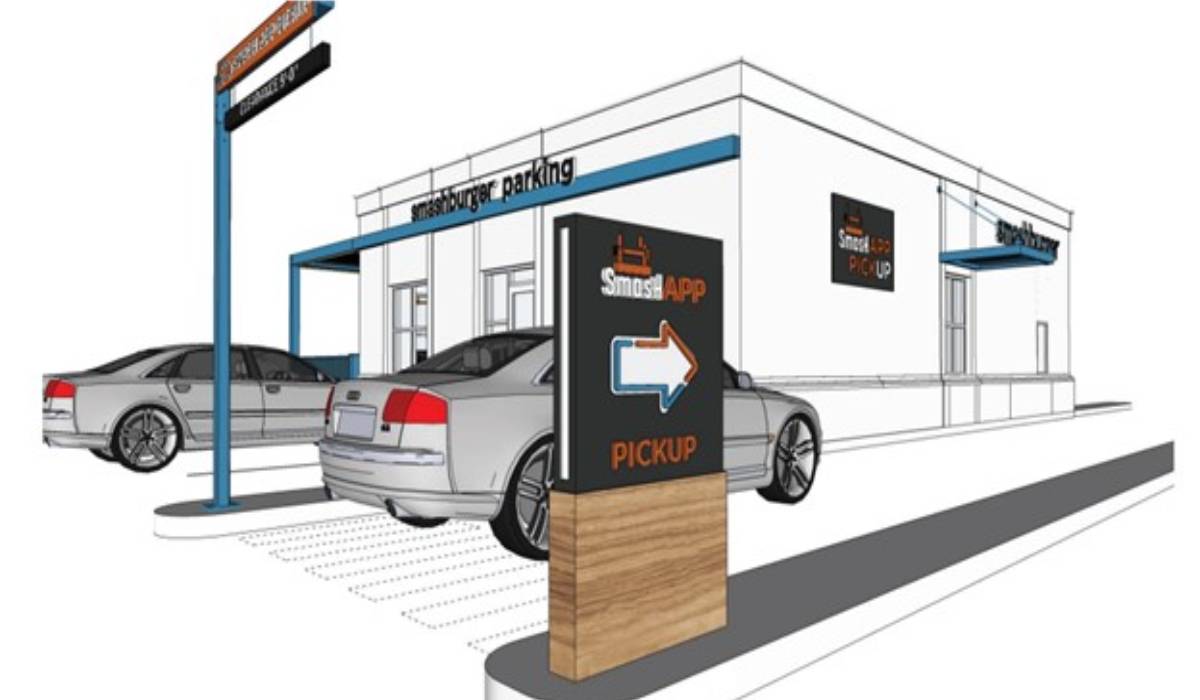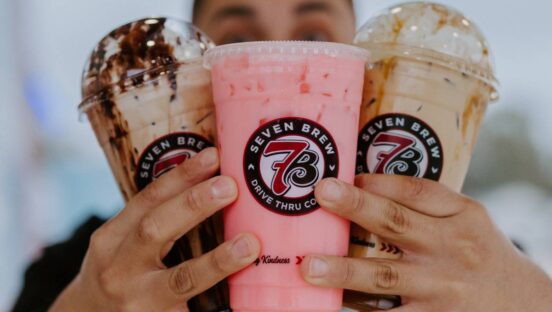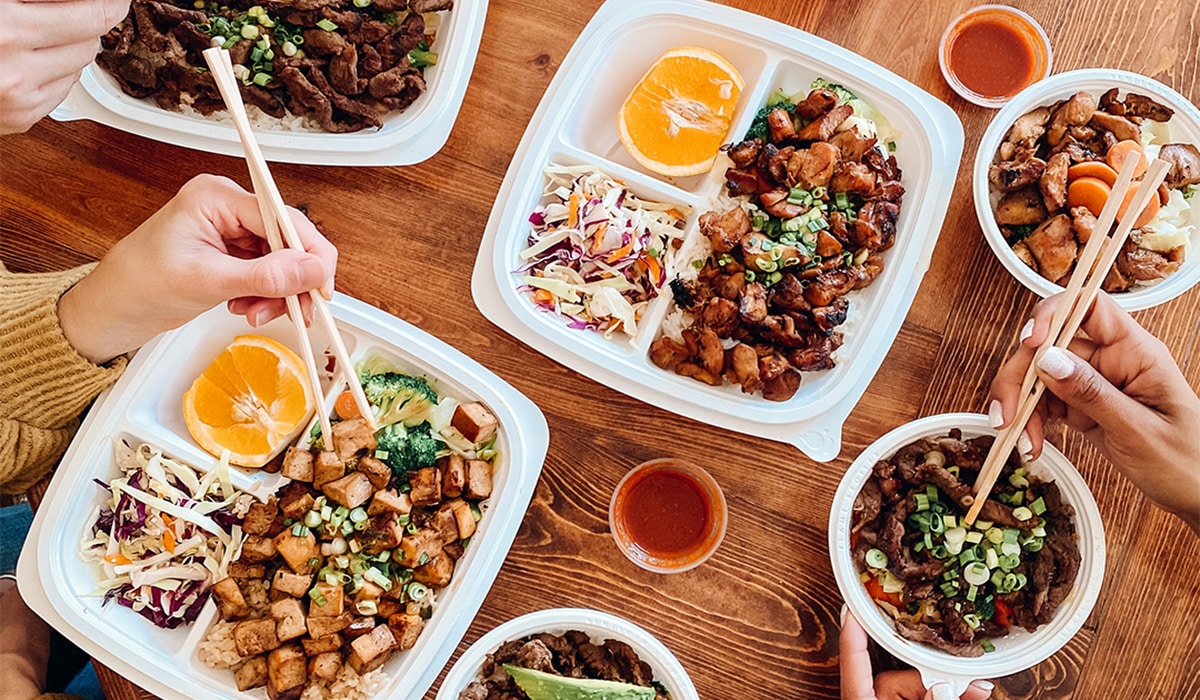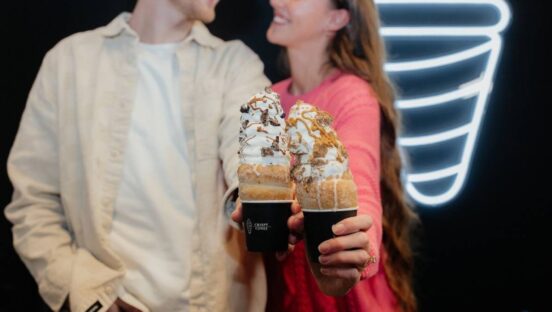Several fast casuals—seeking convenience but not at the risk of quality—have opted for virtual drive-thru pickup windows. Some are more creative than others with their naming conventions.
For example, Chipotle has the Chipotlane. Sweetgreen has the Sweetlane. Smashburger’s name, Mobile App Pickup Lane, is a bit more conventional. The fast casual recently opened its first virtual drive-thru in Houston, and the chain predicted a learning curve for guests when it comes to how the new prototype operates. So it wanted a name that was clear instead of clever.
“I think in the beginning, people are probably not used to us having drive-thrus at all since we only have a handful of them across the country each day,” says Smashburger president Carl Bachmann. “We see more and more people utilizing it. And it’s exciting for them to understand.”
The process works like any other digital lane. Customers order on the app or website and drive to the window without needing payment or talking to a speaker box. In the first few weeks, the drive-thru has mixed as high as 8 percent. For staff, the difference isn’t difficult, Bachmann explains. One person is at the window greeting guests and handing out orders, but it’s only a 15-20 second experience. There’s little strain on employees because of technology filling the gaps. The burger chain uses Curbit’s digital ordering system to provide a precise wait time and accurate tracking for customers.
There’s extra equipment cost for monitors and cameras using software, but that’s where the additional expenses end. Bachmann says the virtual drive-thru is relatively cheaper to build because it doesn’t require as much space. Smashburger isn’t competing against other quick-service companies for extra acreage to fit double lanes.
“So there’s a lot more efficiency financially there as well and competition-wise because it’s so hard,” Bachmann says. “Everybody’s looking for, especially since the pandemic, those drive-thru opportunities. Because we cook our food fresh to order, we would rather utilize the time commuting to the store as our cook time as opposed to people waiting in the line.”
Before launching the virtual drive-thru, the 240-unit Smashburger added Olo in September. Since then, online sales have increased about 20 percent. Bachmann calls it “laying the foundational blocks to really embrace digital transformation.” Olo has also allowed Smashburger to integrate third-party aggregators and remove tablets.
“I think that’s something that’s important that’s really helped our brand leapfrog from behind to being more relevant from a technology standpoint,” Bachmann says. “We’re really embracing that and understanding that those pieces of the puzzle are really the key to the future.”
Smashburger is currently researching existing stores that could retroactively add a pickup window, like some endcap spaces. In other cases, the company will convert traditional drive-thrus. The brand purchased two franchise stores in Colorado Springs, Colorado, for this purpose. Before moving forward with the conversion, Smashburger wanted to ensure the Houston opening went well, especially with the technology. Once that store is to the company’s liking, it will transform each traditional drive-thru, one by one.

Each of these changes is happening at company-owned restaurants.
“I’ve always believed that when we’re using new technology, developing anything to help build the business, we do it on our dime first to make sure we work out the kinks and support our franchisees,” Bachmann says. “So that is a corporate store. And the Colorado Springs stores were bought for this reason as well so that we could really work with and learn how to not only do one from the ground up but also work on how we convert them. So that’s all done on the corporate side of it. So once we’ve mastered that, then we offer that opportunity to our franchisees.”
The Houston unit is 2,000 square feet, which still provides comfortable room for dine-in customers. The return of in-store traffic has been slower than expected, Bachmann says, but Smashburger has reached more than a 30 percent mix in 2023. The fast casual believed dine-in would eventually come back, which is why it rolled out a more modern and chef-inspired design. Some new features include cubby systems, an open kitchen, and elevated interior aesthetics. The brand changed its color palette from fast-food reds, browns, and yellows to modern lighter colors, added a TV for dine-in guests, changed in-store music, and updated its logo to include a smasher, signifying what the brand is known for. Counters were lowered and kitchens were opened so customers could see the hand-smashing process.
Last year, the brand leaned even further into the full-service experience when it debuted a restaurant with a bar offering beers and signature cocktails. Bachmann says it all comes back to taking an omnichannel approach. Customers have different needs, and Smashburger wants to meet as many as it can.
“This gives us an opportunity to serve our guests in a lot of different ways,” Bachmann says. “It also gives opportunity for our franchise to seek out unique locations that maybe some of the other competitors would not be able to seek out. So I think that’s the omni-channel approach.”
Once Smashburger sees the virtual drive-thru mix 15-20 percent and notices understanding from the customer base, then it will allow franchisees to begin participating in development.
In terms of systemwide expansion, the brand expects 20-25 openings in 2023 and more than 30 in 2024.
As for naming, Bachmann doesn’t think Smashburger will go with anything that has “lane” since that’s been used multiple times. But the fact that it is so common across the fast-casual segment does validate Smashburger’s growth plan. Chipotle, the largest fast-casual restaurant in the U.S., opened 236 units last year, and 202 of them had virtual drive-thrus.
Mobile App Pickup Lane may not be the sexiest name, Bachmann says, but he adds that communication is crucial at this early stage.
“So I think it’s about education and saying this is the new way of doing Smashburger,” Bachmann says. “So I think we’ll probably stick with Mobile App Pickup Lane for now until we really established it. And then we’ll probably convert to something a little bit more more fun.”








